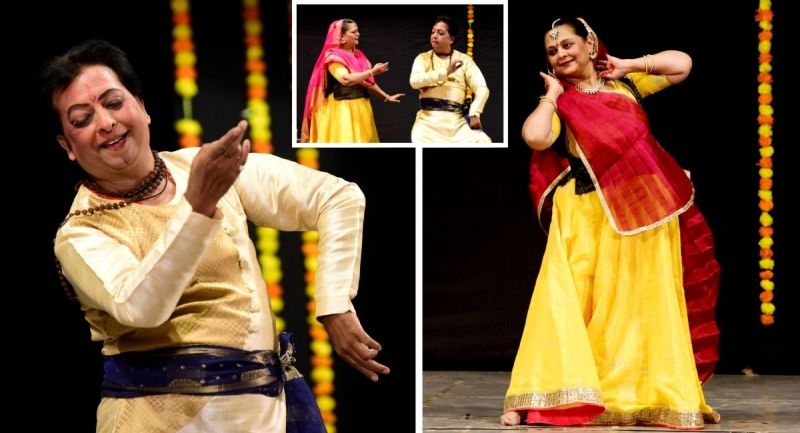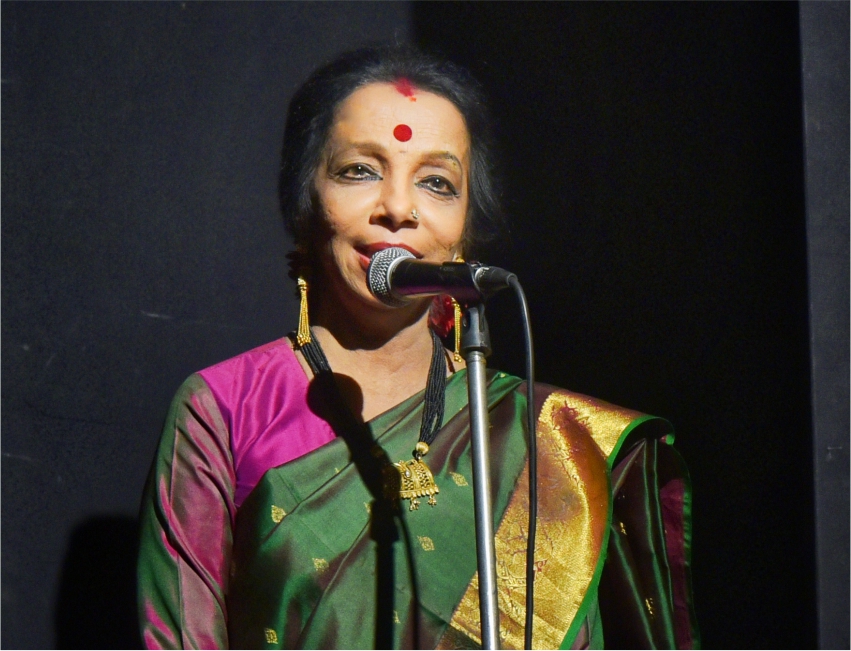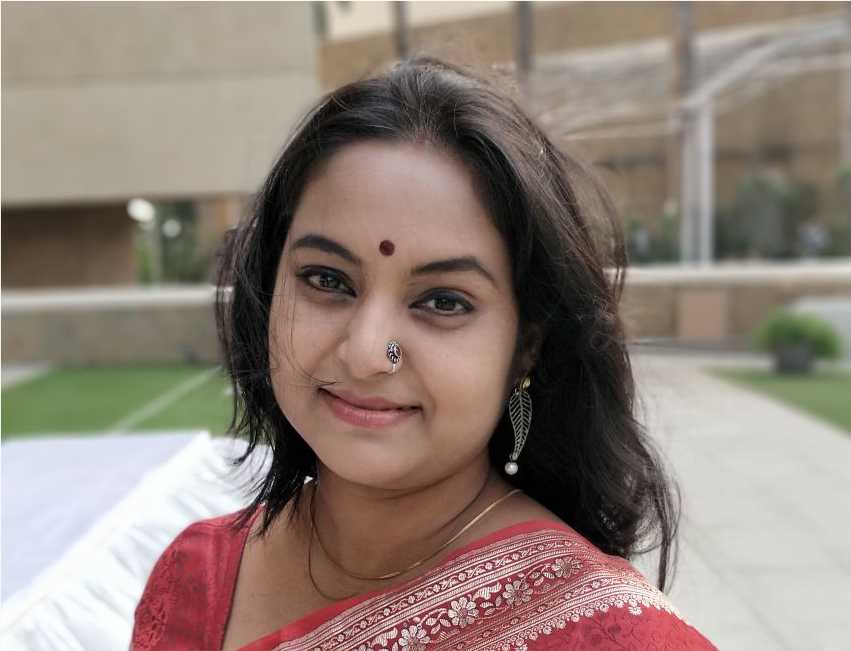Spreading Shambhu Maharaj Legacy ‘Harshotsav’

- Sandip Soparrkar
- 13 Feb, 2025
Harshotsav, a dance and music festival was celebrated in Mumbai recently, organised by the dance guru Pandit Ram Mohan Maharaj and Parul Mishra. Pandit Ram Mohan Mishra, a prominent figure in the world of Kathak, is celebrated for his intricate footwork and fluid expressions, which reflect his deep understanding of the dance’s traditional roots. He has trained numerous students, passing on his vast knowledge of rhythm, technique, and storytelling. Parul Mishra, another star in Kathak, carries forward her husband's legacy with her graceful performances, known for their emotional depth and technical excellence. She has studied under Pandit Durgalal ji in Jaipur gharana style for years, mastering the art and also incorporating contemporary influences. Their joint performances are highly respected, and together they have worked to bring Kathak to a broader, global audience.
Pandit Ram Mohan Mishra and Parul Mishra have collaborated on various cultural initiatives, blending tradition with innovation to captivate audiences worldwide. Their work has earned them numerous accolades, solidifying their place as key ambassadors of Kathak dance. I spoke with the dynamic couple about their dance journey and Harshotsava:
Give me a brief about your dance backgrounds:
I am Nritya Praveen in Kathak and Prabhakar from Chandigarh and Diploma in Uday Shankar Style and Ram Mohan Maharaj has learnt under the legendary Pandit Shambhu Maharaj
What made you start the Harshaotsava festival?
Harsh and Utsav are names of our two sons, so the festival is named after them but it is not about them. Through the Harshotsava Festival, we aim to promote the Kathak legacy of the legendary Padma Shri Pandit Shambhu Maharaj. While most people today are familiar with Pt. Birju Maharaj, many are unaware of the great maestro, Pandit Shambhu Maharaj, from whom he received his training. Our goal is to raise awareness about the grandeur and dedication of Shambhu Maharaj Ji, whose lifelong commitment to Kathak dance has shaped the art form in profound ways. Through this festival, we seek to honor his contributions, ensuring his legacy continues to inspire future generations of dancers and admirers of classical dance.
What was special about this year’s festival?
A special highlight of this event was the presentation of a documentary film by Pandit Shambhu Maharaj Ji’s grandson, Utsav Mishra. This was the first-ever documentary created by him on Pt. Shambhu Maharaj, offering an unprecedented glimpse into the life and work of the legendary maestro. The film featured rare insights from his disciples, including esteemed figures such as Guru Kumudini Lakhiya, Guru Chitra Rao, Dr. Vibha Dadheech, and Rita Ganguly Ji, who shared their personal experiences and knowledge about Maharaj Ji's teachings and influence. This unique documentary not only shed light on the depth of Shambhu Maharaj Ji’s legacy but also preserved invaluable stories and memories for future generations to appreciate and learn from.
How is Harshotsava festival different from the others?
What set our festival apart from others was, first and foremost, the presentation of the first-ever documentary on Shambhu Maharaj Ji. Secondly, we showcased the three major gharanas of Kathak on stage—Lucknow, Banaras, and Jaipur. The maestros representing these gharanas included Pt. Rammohan Maharaj (son of Pt. Shambhu Maharaj, representing the Lucknow Gharana), Parul Mishra (Kathak exponent from the Jaipur Gharana), and Jayantimala Mishra (from the Banaras Gharana, daughter of the legendary Sitara Devi). Additionally, our festival wasn’t limited to Kathak alone; we also featured a mesmerizing Odissi dance performance. To top it all off, the most awaited performance was by the legendary Pandit Anup Jalota, which was truly the "cherry on the cake." This diverse and rich lineup made the event a one-of-a-kind celebration of classical Indian dance and music, offering audiences an experience that was both artistic and culturally enriching.
In modern times what challenges do you face?
One of the biggest challenges we face in today's world is that the true essence of classical art forms like Kathak is often overshadowed by the era of "likes" and "followers" on social media. Artists like my husband, Pt. Rammohan Maharaj, who have dedicated their entire lives to Kathak from childhood, preserving and promoting the legacy of this ancient art form, find it difficult to compete with the superficial attention that social media fame often brings. Pt. Rammohan Maharaj is the 7th and final generation of the Lucknow Gharana's Kathak tradition, and he continues to maintain its purity both in India and abroad. In today’s world, where the number of followers or likes is often mistaken for talent, what truly matters is a deep, sincere commitment to preserving and nurturing Indian arts and culture.
Biggest challenge is maintaining the authenticity and purity of the art while also navigating the modern world where popularity on social media often overshadows genuine talent. The focus now seems to be on quick recognition and instant fame, which often undermines years of rigorous training, discipline, and dedication that classical art forms demand.
What is your message to the newer artist?
The message to new artists is that we want talented dancers to help revive and preserve our rich Indian classical dance and music culture. As we’ve seen, Pt. Birju Maharaj Ji played a significant role in bringing Kathak into the Bollywood spotlight through artists like Madhuri Dixit, and we are especially grateful to Sanjay Leela Bhansali, whose vision of including classical dance and music in films has been instrumental in promoting Birju Maharaj Ji’s Kathak legacy. Saroj Khan, a student of my father-in-law, Pt. Shambhu Maharaj Ji, and Ganesh Acharya, a student of Pt. Lachhu Maharaj Ji, both learned classical dance and music as the foundation of their art before transitioning into films.
We hope that the legacy our family has maintained will continue to thrive, so that the years of hard work and practice put in by our predecessors are not in vain. Kathak is a vast dance form with a wealth of topics to explore and research, and it is crucial for people to understand that every dance form is valuable, but mastering the basics—particularly classical dance—is essential. Classical dance teaches grace, expression, and body movements that help prepare you for other dance forms as well. As more people begin to learn classical dance, they will also come to know the legends behind it, such as my father-in-law, Pt. Shambhu Maharaj Ji, and Pt. Birju Maharaj Ji, whose contributions to the art form continue to inspire generations.



